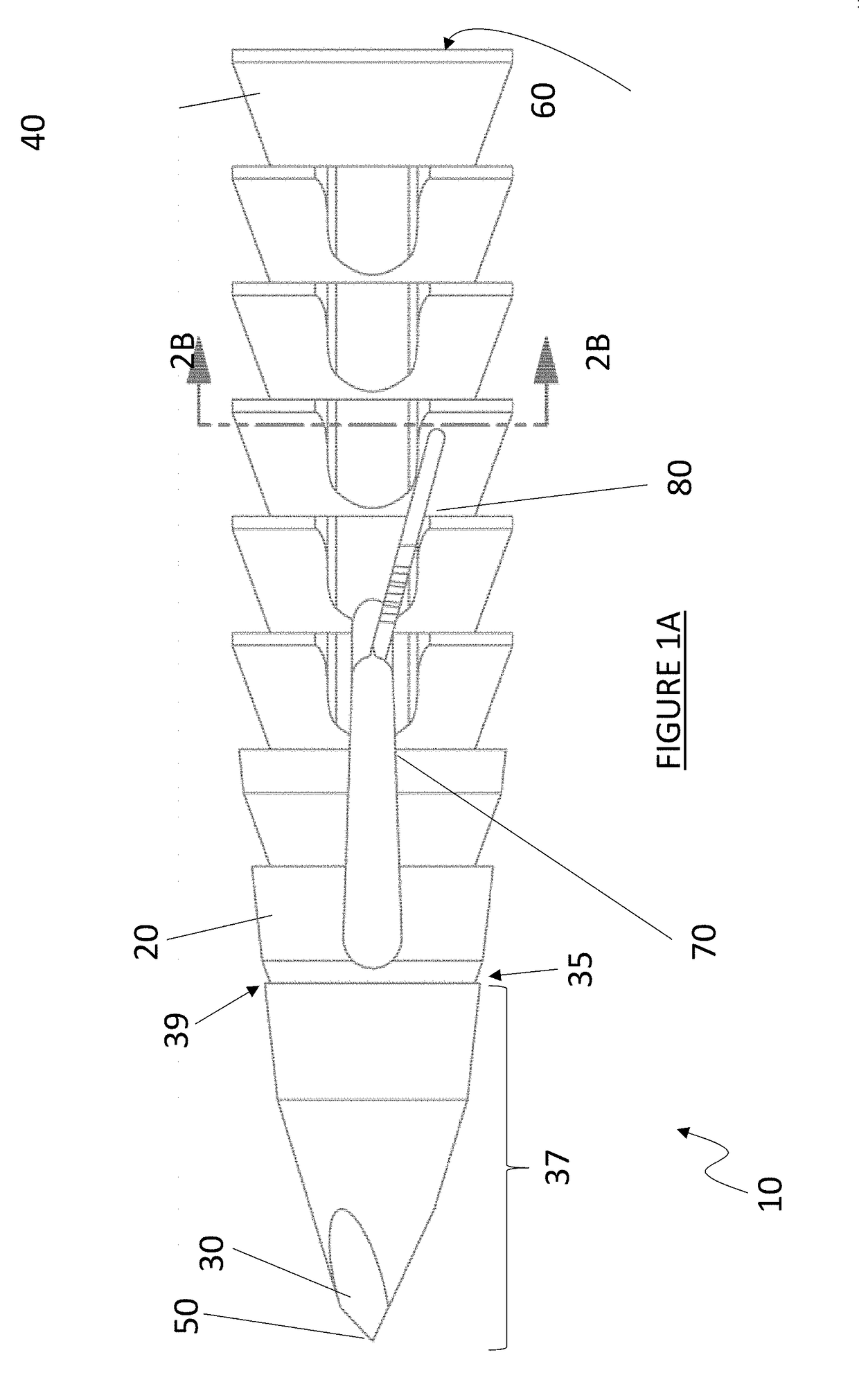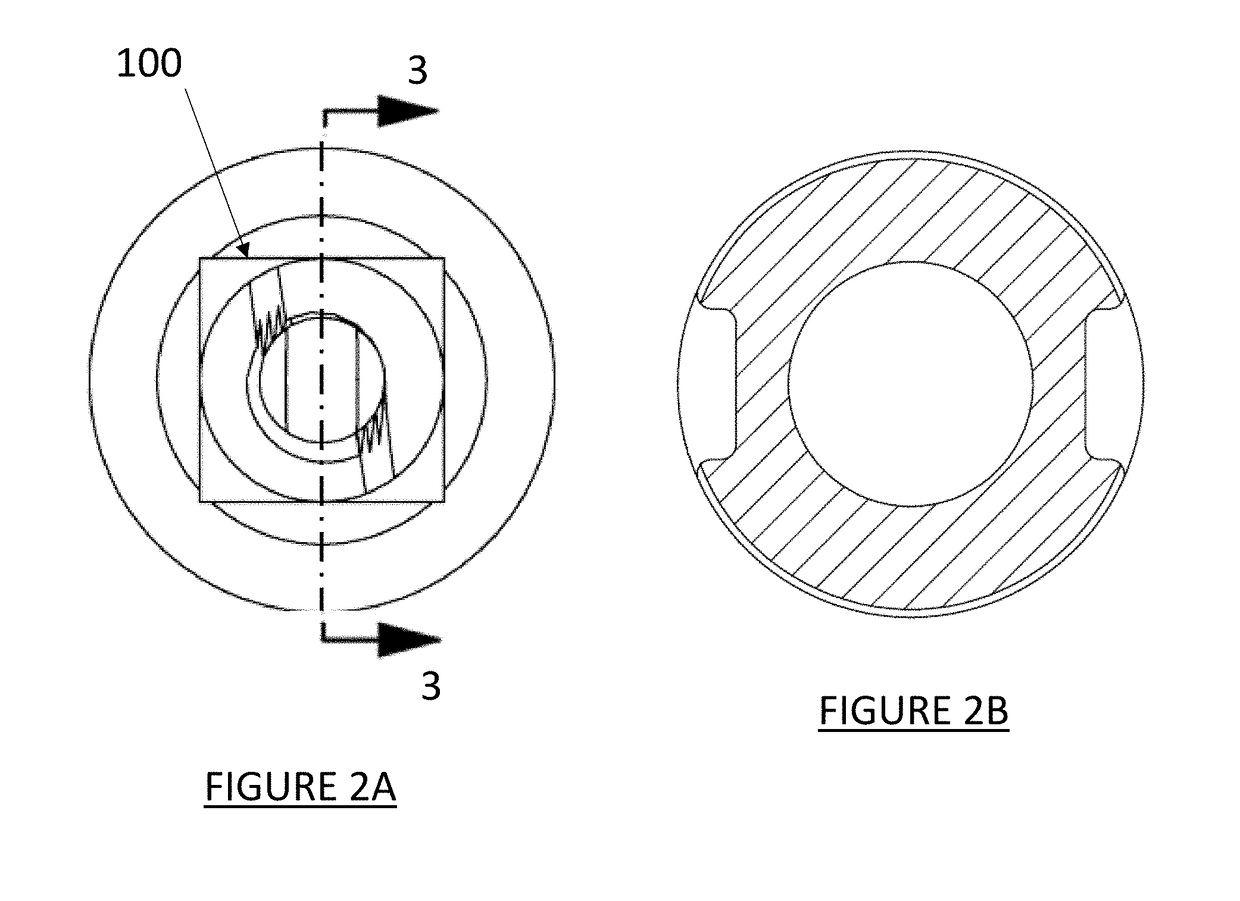Knotless anchor
a technology of anchors and knots, applied in the field of knotless anchors, can solve the problems of broken anchors, broken insertion tools, damage to the suture and/or the bone itself,
- Summary
- Abstract
- Description
- Claims
- Application Information
AI Technical Summary
Benefits of technology
Problems solved by technology
Method used
Image
Examples
Embodiment Construction
[0039]The disclosures of the various embodiments described herein are provided with sufficient specificity to meet statutory requirements, but these descriptions are not necessarily intended to limit the scope of the claims. The claimed subject matter may be embodied in a wide variety of other ways, may include different steps or elements, and may be used in conjunction with other technologies, including past, present and / or future developments. The descriptions provided herein should not be interpreted as implying any particular order or arrangement among or between various steps or elements except when the order of individual steps or arrangement of elements is explicitly described.
[0040]Disclosed herein are a variety of simple-to-insert suture anchors and associated deployment tools which allow for adjustment of suture or tissue tension prior to deployment, do not change the tension on the suture or tissue (and as a result, the captured tissue) when the anchor is deployed, do not...
PUM
 Login to View More
Login to View More Abstract
Description
Claims
Application Information
 Login to View More
Login to View More - R&D
- Intellectual Property
- Life Sciences
- Materials
- Tech Scout
- Unparalleled Data Quality
- Higher Quality Content
- 60% Fewer Hallucinations
Browse by: Latest US Patents, China's latest patents, Technical Efficacy Thesaurus, Application Domain, Technology Topic, Popular Technical Reports.
© 2025 PatSnap. All rights reserved.Legal|Privacy policy|Modern Slavery Act Transparency Statement|Sitemap|About US| Contact US: help@patsnap.com



